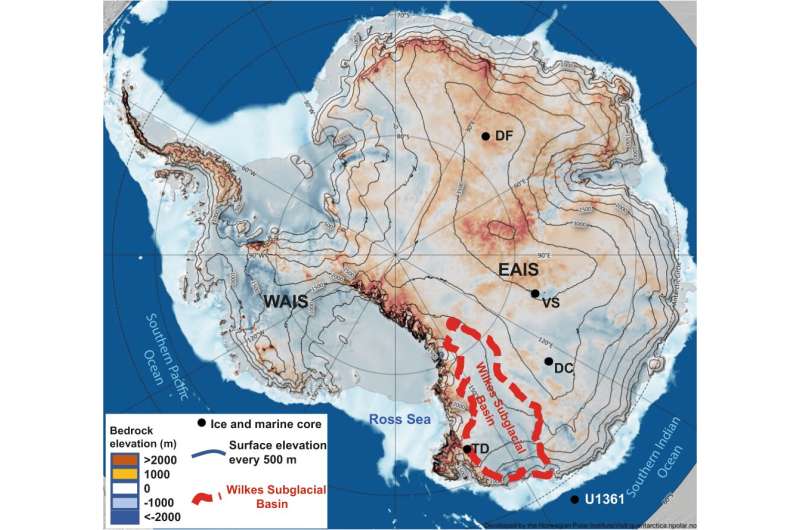Antarctic glaciers vulnerable to rising temperatures

On the East Antarctic Plateau there are huge glaciers under the sea. In order to improve future scenarios related to rising sea levels, scientists need to understand the ways in which these glaciers will respond to rising temperatures in the atmosphere and in the ocean.
An international study has just been published in Nature Communications by Ca' Foscari University of Venice, in collaboration with the French research center LSCE, CNRS, and Roma Tre University. It reveals that coastal glaciers in East Antarctica during past warm climatic periods when temperatures were comparable to, or warmer than, modern conditions, were not stable, contrary to what is reported in the majority of current academic literature.
The study focused on coastal glaciers in the Wilkes Subglacial Basin, whose melting could make the global sea level rise by 3 meters. The research shows that during past warm climatic periods these subglacial basin ice sheets were much more sensitive to rising temperatures in the Southern Ocean than had hitherto been hypothesized.
Researchers reached this conclusion by analyzing the isotopic composition of water molecules of the TALDICE ice core from Talos Dome, a semi-coastal area in East Antarctica. Water isotopes allow scientists to reconstruct past temperatures.
Researchers compared the TALDICE ice core with other Antarctic ice cores, such as the one extracted at the Dome C site for EPICA, and found important differences. The TALDICE ice core showed the consequences of events that other ice cores did not show—especially events that occurred during past warm climatic periods up to 340 thousand years ago.
In order to explain this phenomenon, the comparison included a marine sediment core that was recovered from the continental rise adjacent to the Wilkes Subglacial Basin. Researchers found that in warmer climatic periods, coastal glaciers melted and the grounding line retreated.
The researchers believe that the TALDICE isotopic anomalies reflect a reduction in elevation at Talos Dome arising from ice loss and grounding line retreat in the Wilkes Subglacial Basin, caused by rising temperatures in the Southern Ocean. Model simulations seem to confirm this theory.
"The coastal glaciers in the Wilkes Subglacial Basin retreated about 300 km towards inner Antarctica between 330 and 320 thousand years ago," says Ilaria Crotti, main author of the study, which she conducted during her Ph.D. studies in Science and Management of Climate Change at Ca' Foscari and Paris-Saclay University.
"This is the greatest retreat of the past 350 thousand years. It contributed to a 1-meter global sea-level rise. We estimate that another, less significant retreat of about 100 meters happened between 125 and 115 thousand years ago, and that it contributed to a 50-centimeter global sea-level rise."
The study will enable scientists to understand how coastal glaciers in East Antarctica will react to rising atmospheric and oceanic temperatures.
More information: Ilaria Crotti et al, Wilkes subglacial basin ice sheet response to Southern Ocean warming during late Pleistocene interglacials, Nature Communications (2022). DOI: 10.1038/s41467-022-32847-3
Journal information: Nature Communications
Provided by Ca' Foscari University of Venice




















